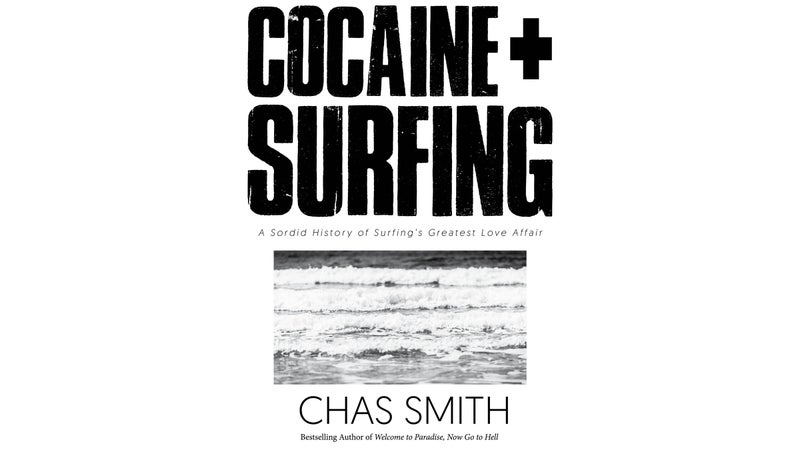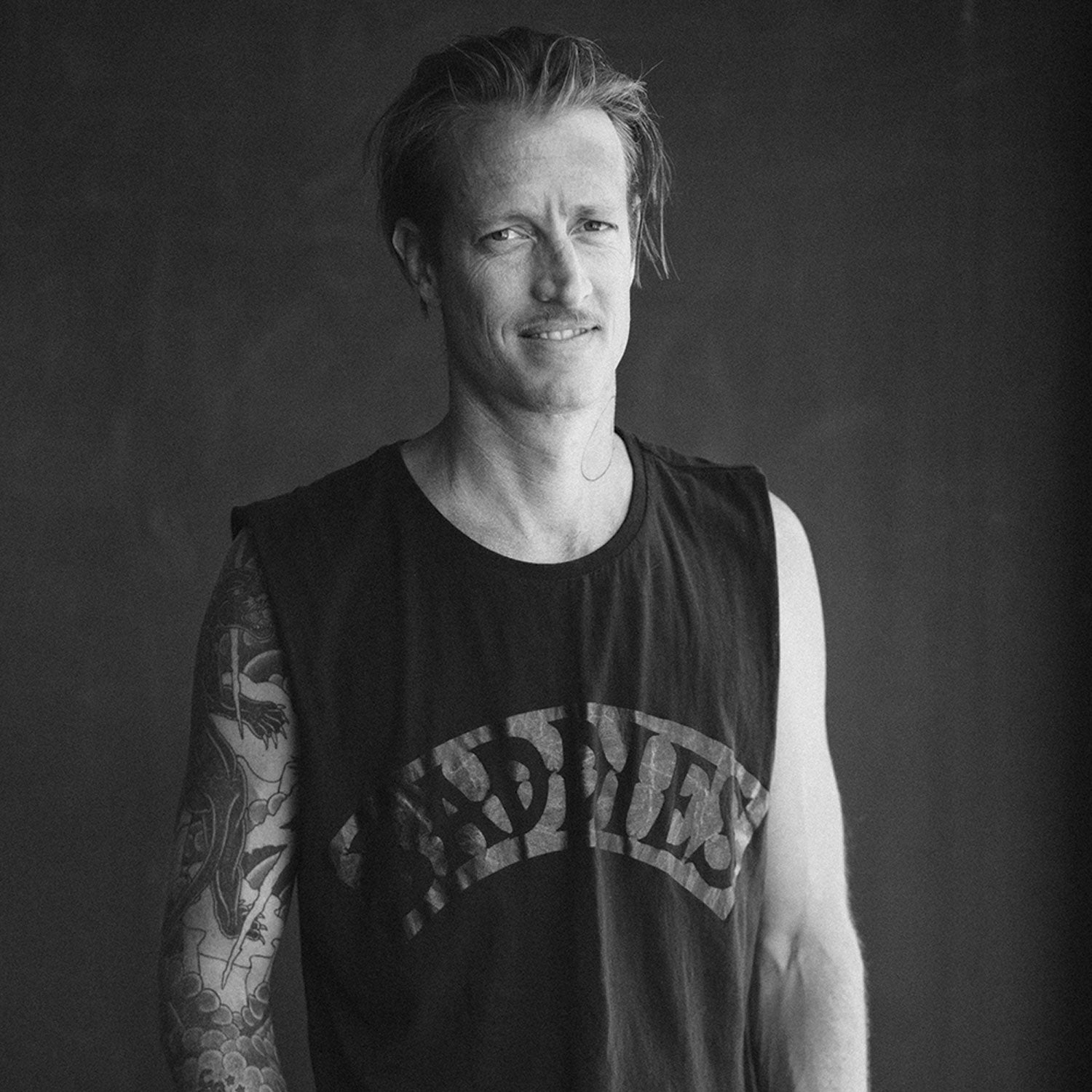Before I tell you why I loved reading Chas Smith’s delightful new book, , I wish to raise two points of order.
First, a matter of personal disclosure: I do not know Chas Smith, and I have never so much as emailed the man, but I once practiced the very surf journalism that animates much of Smith’s self-loathing in Cocaine + Surfing, and I am personally acquainted with three of Smith’s main characters. Matt Warshaw, a dear friend of mine, appears as a Yoda-like surf historian who gamely points out that surfing and cocaine were both potentially born in Peru about 3,000 years ago.
Marcus Sanders, an occasional surfing companion of mine who occupies the in-law apartment in my San Francisco home, appears as a fellow surf journalist demanding that Smith remove a certain photograph from Smith’s tabloid-style website Beach Grit.
Finally, Brad Melekian, an English professor at the University of San Diego and a former surf journalist, has been a longtime correspondent of mine on the core existential question of Cocaine + Surfing: whether or not self-respect is even possible for someone whose job description is “surf journalist.” While writing for �����ԹϺ���, Melekian broke the most important drugs-plus-surfing story of all time, about the role of substance abuse in the death of former world-champion-surfer Andy Irons. Surf culture and the surf industry are both so allergic to anything resembling unvarnished truth that Melekian got widely and viciously attacked by, among others, Smith himself, who wrote that Melekian should go to hell.
Smith wrestles with the universal question of how to reconcile the life we once dreamt of living with the one in which we now find ourselves.
Now for my second point of order: Cocaine + Surfing is not really about cocaine and surfing. That’s a good thing, because although Cocaine + Surfing makes for a catchy title and a smattering of salacious anecdotes, it’s a stupid idea for a book. It’s an even stupider idea for a book conceived in the way that Smith initially (although not ultimately) conceived of it—as, to quote his equally-catchy subtitle, “a sordid history of surfing’s greatest love affair.” There have indeed been drugs in the surf world over the years, including a fair bit of cocaine, but cocaine is absolutely not surfing’s greatest love affair. (Waves, anyone? Weed?) Smith’s attempt to duct-tape over this awkward detail by defining “real surfers” as belonging to the minuscule subset-of-a-subset of surfers who may once have had a statistically meaningful propensity for cocaine use—rich-and-famous pros and corporate tools in the surf-industrial complex—is equally absurd, not to mention offensive to the millions of dedicated surfers like myself who don’t give a rat’s ass what any of those people do with their time.
Despite this horribly misguided premise—or, rather, because of it—Cocaine + Surfing is a dazzling page-turner, highly-recommended beach reading, and absolutely the funniest book ever written about surfing. To hold those contradictions together in one’s mind, it helps to recognize that Smith’s literary models do not include serious works like my man Warshaw’s scholarly History of Surfing or William Finnegan’s Pulitzer-Prize winning Barbarian Days; A Surfing Life.
Cocaine + Surfing belongs, rather, to the honorable lemons-into-lemonade lineage that begins with Ross McElwee’s cult-classic 1986 documentary film Sherman’s March: A Meditation on the Possibility of Romantic Love In the South During an Era of Nuclear Weapons Proliferation, in which McElwee tries to make a film about the civil war but ends up interviewing all his ex-girlfriends instead, and Geoff Dyer’s , an unforgettable book about not writing a book about D. H. Lawrence.
In the same spirit, Cocaine + Surfing is a book about a self-loathing surf journalist getting the seemingly-brilliant idea to write a book about cocaine and surfing, hitting the road for research in various corners of the surf industry, discovering that it’s actually a stupid idea, and wondering how his once-promising life came to such a sad pass.
Or, as Smith puts it, “I was supposed to have waved goodbye to this shallow end of the swimming pool years ago. I was supposed to be a Pulitzer Prize-winning war reporter by now, spilling valuable words on the plight of Syrian refugees while dodging bullets. Or maybe in the White House briefing room being shouted down by the press secretary for speaking truth to power. Or front row at the Fendi show in Paris, across from Anna Wintour … anywhere but here.”
Smith titles the chapters in Cocaine + Surfing after the classic stages in the so-called Hero’s Journey, the standard Hollywood-screenwriter’s plot template: The Call To �����ԹϺ���, Refusal of the Call, Supernatural Aid, Road of Trials and Tests. Hewing faithfully to format, with himself as questing hero and peace with his own dubious life choices as Holy Grail, Smith travels from Warshaw’s office in Seattle (of all places) to a wake for the defunct Surfing magazine, to a surf-movie premiere, surf contest, and “lifestyle fashion” sales convention. Along the way, Smith riffs amusingly on the relative histories of the drug and sport in question, and he does drum up a few reasonably scandalous cocaine-plus-surfing tidbits.
The surprising joy of this book, though—and it really is a joy—has nothing whatever to do with cocaine. It lies entirely in Smith’s brilliant skewering of surf culture, the surf industry, his own complicity in both, and the frailty of the human ego.
This includes bewilderment at ludicrous surf fashion items like Reef’s Mick Fanning signature beer-bottle-opening flip-flops. “Yes, Reef literally and honestly makes a sandal with a bottle-opener on the bottom,” Smith writes. “Like, you walk down the street to your friend’s BBQ, walk through dog urine or bum urine or horse urine … grab a beer, take your sandal off and use its bottom to pop the cap. Literally. Honestly.” Smith also delights in deep inside-baseball stuff like his repeated reference to the formerly-terrific Australian surf magazine Stab as “the fake version of Beach Grit” when everybody knows that his own Beach Grit is in fact a fake version of the original Stab.

Smith is also quite good on the insane recalcitrance of many young pro surfers around journalists, combined with their equally insane behavior in front of same—as if the culture has somehow deluded young pros into thinking that journalists are only allowed to write down whatever you say during a formal question-and-answer interview, so it’s fine to treat journalists like garbage and behave like a racist intoxicated cretin in their presence so long as you answer all of their direct questions with meaningless platitudes. (Notable exceptions, in my experience, include Kelly Slater and Laird Hamilton, honorable men who give reliably terrific interviews).
Smith is also an astute observer of surf culture’s exhausting repertoire of secret (and moronic) codes of cool, as in, “Don’t walk down the beach with your leash attached to your leg. Don’t hype a hurricane swell … Keep your hands in your armpits in the lineup. Don’t keep your hands in your armpits in the lineup if another surfer already has his hands in his armpits. Don’t rub sand in your wax before paddling out. Sometimes rub sand in your wax before paddling out based on thirty distinct factors.” At one surf-industry gathering, Smith sees a young woman dressed scantily in Monster-Energy-branded clothes, working a Monster Energy Drink booth, and wonders “if she was once excited to be a Monster Girl. Like, if that was once her dream.” He runs into a brand representative “who is old now and has slowly slid down pole of relevant surf brands, Rip Curl wetsuits to On A Mission surfboard bags and is now shilling wax and skateboards. He should know better. He should have gotten out forever ago but the whole damned surf thing is a trap and he asks me, ‘You seen Dill-dog? Somebody said that bro is here but I swear he Christian Baled an hour ago. How’s that? I told him this party was gonna be on like Donkey Kong …”
My personal favorite is Smith’s introduction of a prominent filmmaker as having once made vampire softcore porn for Showtime. Smith then describes this guy ordering “Mexican coffee with extra Mexican” and quotes him as saying, to Smith, “Why do you always tell people that I directed vampire softcore porn for Showtime? I’ve had films in Cannes, in Sundance. I’ve won awards.”
What makes all this winning instead of cruel is that the true target of Smith’s ridicule is Smith himself. He holds himself above nobody, implicates himself in all of surf culture’s dopiness, and caps his book with a ����-���ܱ��貹—meeting Melekian and conceding 100 percent that Melekian showed journalistic bravery in exploring the more painful aspects of the Andy Irons story. Reflecting on his own public abuse of Melekian, all those years earlier, Smith can only say, again of himself, “Oops … What a dick. What a prick. Trivializing cocaine abuse and writing myself into a story I’m not a real part of.”
Near the end of the book, Smith looks forward by looking inward, asking, “How does a surf journalist look at sixty? Does he look like an asshole? Does he just completely cave and wear the Mick Fanning beer opening sandal?” Put another way, Smith wrestles with the universal question of how to reconcile the life we once dreamt of living with the one in which we now find ourselves.
I won’t spoil the plot by telling you how Smith answers that question except to say that he ends with the classic Hero’s Journey finale as Master of Two Worlds. And also that it involves a sandal, a beer, and the unmistakable taste of something unsanitary.


